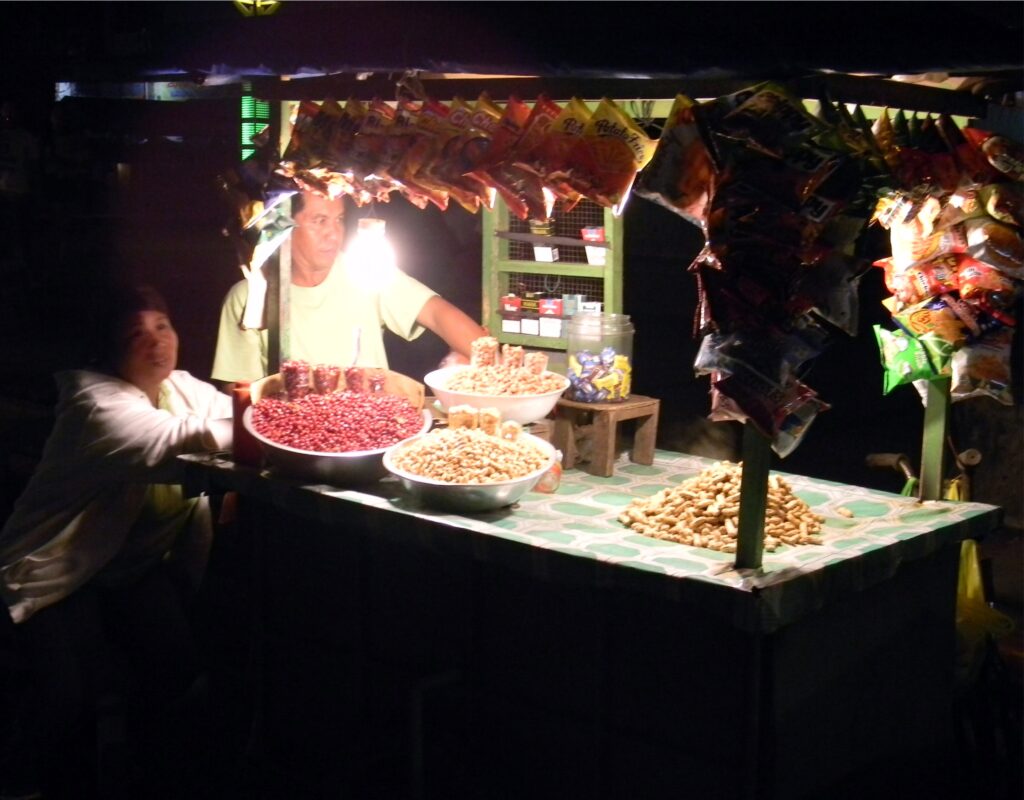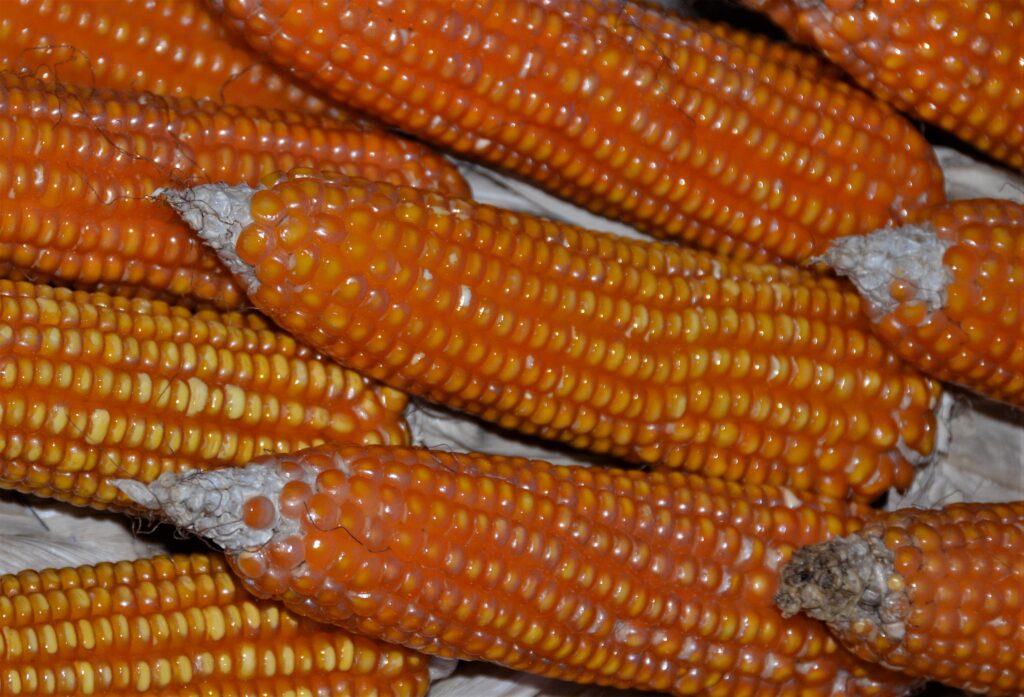Text and Photos by Henrylito D. Tacio
On various occasions at home, one of those that are always present in the food tables is the loaf bread. Equally important is the peanut butter, a modern-day food obsession which goes inside the bread. Both can be bought at the sidewalks.
But what most Filipinos don’t know is that those homemade peanut butter, although cheap, might be laden with aflatoxin, a form of mold known to be a human carcinogen or something that causes cancer.
Here’s one science scribe wrote of it: “Aflatoxin is an incredibly powerful poison, and is harmful or even deadly at very low concentrations… (It) is like a secret agent, expert at passing unnoticed but dangerous and licensed to kill.”
Now, that’s very alarming.
“There are many different types of molds and fungus that can grow in food, including various species of mycotoxins, but aflatoxin has gained attention more than most others because studies have found clear evidence of its potential for causing carcinogenic effects,” wrote Jillian Levy, a senior writer at DrAxe.com and Ancient Nutrition.
Aflatoxin is produced by a species of fungus, called Aspergillus, that thrives in the soil around crops grown in hot, humid environments. After harvesting, the fungus continues to grow, producing more aflatoxin.
There are actually at least 13 different types of naturally-occurring aflatoxin toxic molds that researchers have identified. Of the 13 species, the type called aflatoxin B1 is considered the most toxic, capable of causing health problems.
“How badly a person is affected by aflatoxin will depend on factors like their current state of health, level and duration of exposure, strength of their immune and digestive system, and overall quality of their diet,” Levy wrote.
According to studies, there are two ways that aflatoxin contamination usually occurs: either you consume large amounts at once and experience “poisoning,” you slowly acquire aflatoxin over time in smaller quantities.
“Large doxes of aflatoxin lead to acute poisoning (aflatoxicosis) that can be life threatening, usually through damage to the liver,” the UN World Health Organization (WHO) states. Outbreaks of acute liver failure (jaundice, lethargy, nausea, death), identified as aflatoxicosis, have been observed in human populations since the 1960s.”
In the United States, the Food and Drug Administration (FDA) says poisoning is relatively rare but more dangerous and can lead to problems like liver cancer, mental impairments, digestive reactions, coma, hemorrhages and malabsorption.
Among the long-term effects that aflatoxin exposure can cause include: food allergies, autoimmune disease reactions, inflammation that affects the heart, damage to the digestive organs including the liver and kidneys, and growth and development impairment. It also paves way for a higher risk for viral hepatitis or parasite infestation.
Research shows that aflatoxin targets the digestive organs most, especially the liver by raising the risk for liver cancer, hepatitis and liver disease. Long-term exposure to aflatoxin is a major risk factor for liver cancer called hepatocellular carcinoma, which causes liver scarring, loss of nutrients, inflammation of the digestive tract and other serious problems that can lead to death.
Peanuts are consumed in high amounts around the country and most Filipinos don’t know much about aflatoxin. Aside from the popular boiled or fried peanuts, they are also utilized in many other types of processed foods (peanut butter, packaged snacks like cookies, and ice cream, among others).
Aside from peanuts, aflatoxin is also present in corn, another staple food of Filipinos. Corn is also used in preparing feeds for livestock (cattle, chickens, goats, pigs and sheep).
“In chickens, the effects of aflatoxins include liver damage, impaired productivity and reproductive efficiency, decreased egg production, inferior eggshell quality, inferior carcass quality and increased susceptibility to disease,” the United Nations health agency reports.
“Pigs are also highly affected by aflatoxins, with the chronic effects largely apparent as liver damage. In cattle, the primary symptoms are reduced weight gain as well as liver and kidney damage; where milk production is also reduced. Different forms of the enzymes that metabolize aflatoxins are considered responsible for the different susceptibilities of different animals to the toxic effects of aflatoxins,” it further states.
There’s bad news. “The spread of aflatoxin in corn can be hard to control because of the enormous quantity that it’s grown in, how long it’s stored and how often it’s processed to form other foods,” Levy wrote. “Because some populations eating a lot of corn might already have impaired immunity, aflatoxin in corn is a big concern for liver disease formation.”
In addition, others that are most likely to be contaminated with aflatoxin include milk, cheese and meat (become contaminated due to the spreading in aflatoxin in livestock feed), nuts (especially almonds, pecans, pistachios and walnuts), soybeans, and dried spices. Although it’s not commonly eaten, cotton seed is also a major crop that tends to grow aflatoxin.
“In developing nations, many people are exposed to aflatoxin through food grown at home,” said a report. “Inadequate harvesting and storage techniques allow for the growth of aflatoxin-producing fungus and homegrown crops are not routinely tested for the presence of aflatoxin. As a result, an estimated 4.5 billion people living in developing countries may be chronically exposed to aflatoxin through their diet.”
In the Philippines, research in aflatoxin started in 1967 by the Food and Nutrition Research Institute with a survey on the aflatoxin content of various foods. Local researchers from government agencies and academe also conducted studies on the aflatoxin contamination of agricultural crops and their products and/or by-products.
“The data indicated that corn and peanuts are the two commodities that contain toxic levels of aflatoxin,” the studies found out.
Some years back, the state-run FDA “warned the public against peanut products, including those sold by ambulant and street vendors” that are contaminated with aflatoxin.
Are the peanut butter and corn you’re consuming free from aflatoxin?










